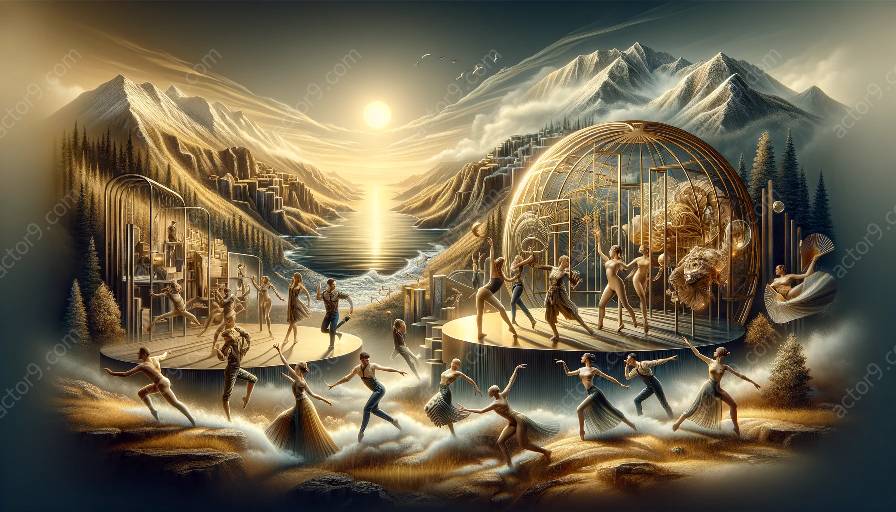Physical theatre is a dynamic art form that transcends traditional boundaries of performance through the use of the body, movement, and space. In this article, we will delve into the world of props and objects in physical theatre, examining their significance, techniques, and impact on the creative process.
Understanding Physical Theatre
Before delving into the use of props and objects, it is essential to comprehend the essence of physical theatre. Physical theatre is a genre that emphasizes the use of the body as the primary tool for storytelling, often intertwining elements of dance, mime, and acrobatics to convey narratives and emotions.
Techniques in Physical Theatre
In physical theatre, performers harness a variety of techniques to express themselves without relying on scripted dialogue. These techniques include gestural language, ensemble movement, and spatial awareness, all of which contribute to the immersive and visceral nature of physical theatre performances.
The Significance of Props and Objects
Props and objects are essential components in physical theatre, serving as extensions of the performer's expression and contributing to the visual and symbolic language of the performance. Incorporating props and objects enhances the storytelling process, offering a tangible and immersive experience for both performers and audiences.
Enhancing Performances Through Innovative Techniques
The use of props and objects in physical theatre allows performers to explore innovative techniques that elevate the visual and narrative aspects of their performances. By manipulating and interacting with various props and objects, performers can create rich and dynamic narratives that transcend traditional forms of storytelling.
- Symbolism: Props and objects in physical theatre are often imbued with symbolic meaning, enriching the narrative and adding layers of depth to the performance.
- Transformation: Props and objects can undergo transformative uses within a performance, morphing from one object to another, mirroring the fluidity and versatility of physical theatre itself.
- Utilizing Space: Props and objects are utilized to animate and transform space, creating dynamic landscapes that serve as the canvas for the physical theatre performance.
Expressive Storytelling
The use of props and objects in physical theatre facilitates expressive storytelling, allowing performers to communicate narratives and emotions through the manipulation and interaction with these elements. This form of storytelling transcends linguistic barriers, making physical theatre a universal and inclusive art form.
Impact on Creative Process
Props and objects play a pivotal role in shaping the creative process in physical theatre. They inspire performers to innovate and experiment, providing endless possibilities for the construction of narratives and the exploration of character dynamics.
Embracing Creativity and Collaboration
Physical theatre encourages a culture of creativity and collaboration when it comes to the use of props and objects. Performers, directors, and designers collaborate to envision and create innovative uses of props and objects that align with the overarching vision of the performance.
Conclusion
The use of props and objects in physical theatre is a testament to the boundless creativity and expressive potential of the art form. Through the seamless integration of props and objects, physical theatre performances come to life, transcending the constraints of traditional storytelling and captivating audiences with their innovative and immersive narratives.




































